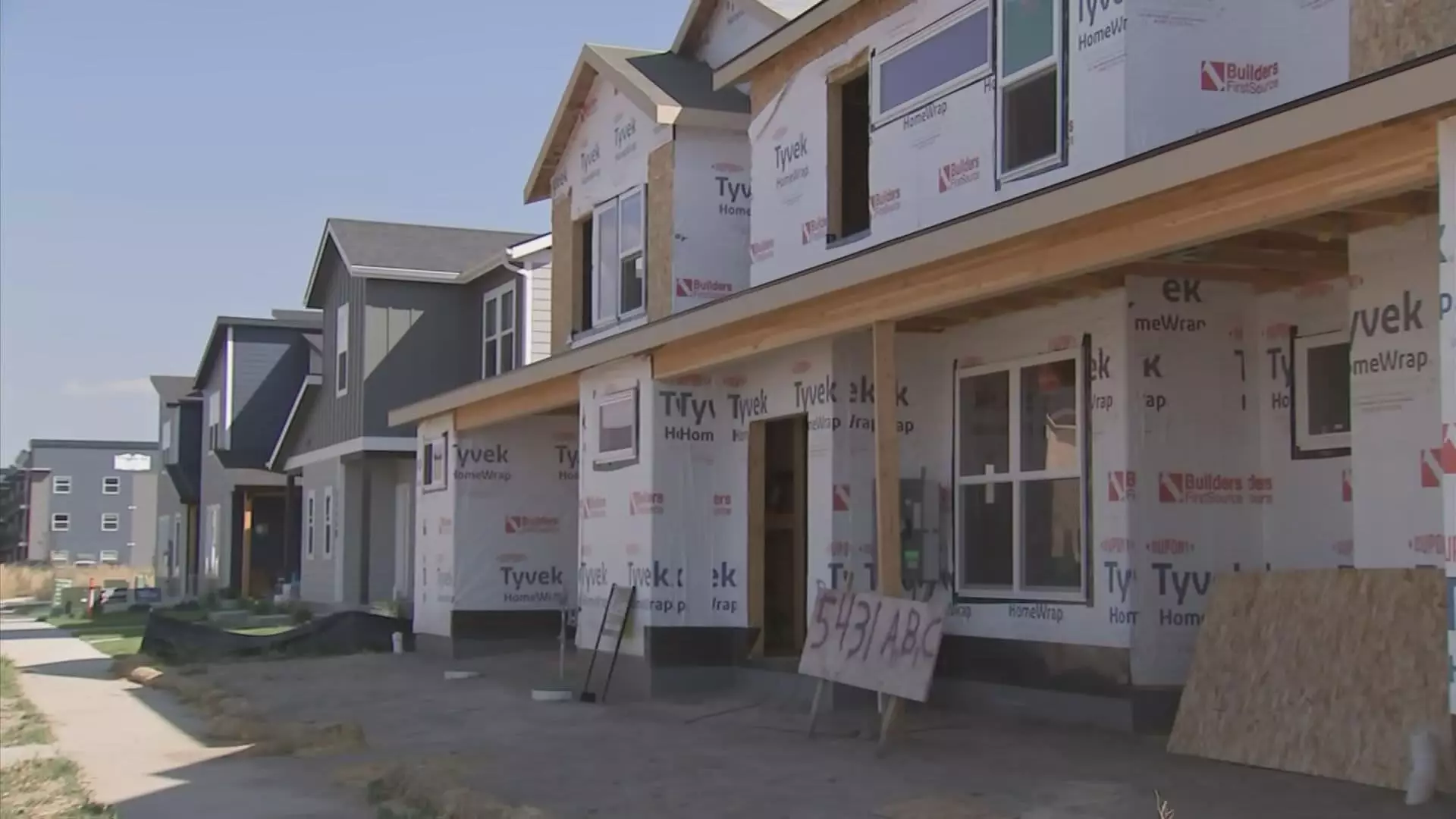In recent years, the picturesque landscapes of Montana have become increasingly difficult to navigate for those seeking affordable housing. The rise of new condominiums and duplexes in Missoula is merely a response to an overwhelming demand that has spiraled beyond the reach of many Montanans. DJ Smith, the president of the Montana Association of Realtors, highlights the grim reality faced by residents. “For Montanans, it’s been harder and harder to find a home that meets their needs and is affordable,” he states. This acute housing shortage has intensified due to an influx of out-of-state buyers attracted by the state’s natural beauty and lifestyle, driving prices up, especially in areas like Missoula.
The dramatic increase in demand stems from a broader trend: many individuals selling their high-value homes in states like California and Colorado have cash in hand, making them formidable competitors in Montana’s housing market. This shift not only impacts affordability but alters the very fabric of local communities, as traditional residents find themselves increasingly priced out of neighborhoods that have been their homes for generations.
As the housing crunch continues to escalate, it has transcended mere economic concern to become a pivotal issue in political discourse. The upcoming Senate race is tightly intertwined with the fate of Montanans seeking affordable housing solutions. Democratic Sen. Jon Tester faces a daunting re-election bid in a state that leaned heavily Republican in the last presidential election. With the Cook Political Report now projecting a lean towards Republican, Tester has made housing a cornerstone of his platform. He emphasizes the plight of locals who feel they are losing ground in their own state. “We’re seeing a lot of folks come into the state, rich folks, who want to try to buy our state, to change it into something it’s not,” he commented during a heated debate.
His opponent, Tim Sheehy, a former Navy SEAL and entrepreneur, offers a contrasting narrative. Sheehy blames the surging costs directly on inflation, which he attributes to policies supported by the Biden administration and Tester. This political tug-of-war over the housing crisis reveals deep divisions in both policy approach and the understanding of the underlying issues fueling the rising costs.
The Economic Landscape: Inflation and Labor Shortages
Beyond the realm of politics, the financial dynamics that contribute to Montana’s housing crisis are multi-faceted. According to data from the National Association of Realtors, Montana stands as the least affordable state for homebuyers, with home prices skyrocketing by an astonishing 66% over the past four years. Comparatively, the national average stands at about 50%. Meanwhile, the median income in Montana struggles to keep pace with these rising costs. With the median home price in Missoula now siting at $568,377, many locals are left grappling with the harsh reality of homeownership slipping from their grasp.
Montana’s economy is further strained by a labor shortage in construction, resulting from a diminishing pool of skilled tradespeople. Andrew Weigand, a builder in Missoula, points out that fewer subcontractors lead to increased costs and diminished competition. “If you have a pool of three or four subcontractors to use, and not 30 or 40, you’re going to have not as competitive a market as you do in other areas of the nation,” he explains. This shortage not only impacts housing prices but raises concerns about the future viability of the local construction industry, particularly as seasoned workers approach retirement without new recruits to fill their shoes.
In response to this mounting crisis, Tester has proposed several measures aimed at easing the burden on housing challenged Montanans. His initiatives include grants for expanding housing developments and funding home repair programs to support those struggling to maintain their properties. Additionally, he has suggested tax incentives for mobile home park owners to facilitate community-based ownership transitions rather than selling to profit-driven developers.
Conversely, Sheehy’s solutions emphasize the need to address the labor deficit through enhanced trade programs and vocational training to inspire a new generation of tradespeople. Both candidates recognize the need for change, albeit with differing visions on how to achieve it.
Looking Forward: A Crossroads for Montana
As Montana battles soaring housing prices and the influx of outside investment, stakeholders must grapple with the consequences for local communities and continue pushing for policies that prioritize residents’ needs. The housing crisis reflects broader economic issues that require collaborative and innovative solutions. Only through proactive engagement from lawmakers, the private sector, and the community can Montana hope to address the affordability crisis and ensure that the state’s rich resources and opportunities are available to all its residents. The choices made today will define Montana’s future, shaping its communities and the very essence of the state itself.

